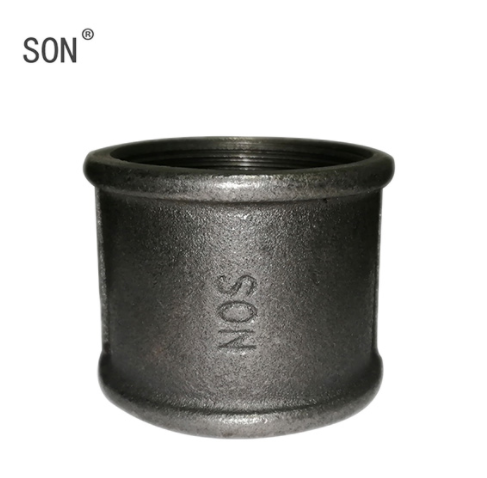Malleable iron, just like cast iron is produced by casting methods, but they are actually quite different from each other. Although, malleable iron fittings are initially cast iron fittings, the heating process transforms them into the more durable malleable cast iron fittings.
In this article, we will clear up any confusion between malleable iron and cast iron and learn about the different materials under the cast iron umbrella. We'll explain what makes malleable cast iron different, and which applications are best suited for each material. Let's take a look.
Malleable Iron
Malleable cast iron is originally cast as white cast iron and then treated at approximately 1,650°F, 900°C. Malleable cast iron contains more of a dull boundary as opposed to a thin sheet, which eliminates the stress concentration problems that can result from gray cast iron. Malleable cast iron has properties very similar to those of mild steel.

Cast Iron
Due to its extremely brittle nature, cast iron fittings should never be used in piping applications. Understanding the differences is key to ensuring you choose the right material fitting for your application. Below, we have four materials that fall under cast iron, gray, white, ductile and malleable.
Gray Cast Iron
Gray cast iron is not the material used to make cast iron or malleable fittings. Gray cast iron is named for the gray appearance emitted by the fracture of the material. Gray cast iron is is the most widely used casting material. Gray cast iron has strength comparable to low or medium carbon steel, but it has less tensile strength and impact resistance compared to steel. Common items made from gray cast iron are manhole covers and well seals.
White Cast Iron
White cast iron is used for cast iron and malleable iron fittings. White cast iron contains cement and has a white surface, hence the name. White cast iron is too brittle for many structural applications, but it has good hardness and wear resistance and can be used in many applications, including teeth for backhoe buckets and lift rods for ball mills. The cost of this material is also relatively low.
Ductile Iron
Ductile iron is a recent development. Small amounts of magnesium are added. Ductile iron is very similar to malleable cast iron, but allows for larger parts to be cast than malleable cast iron, where there is a limit to the size of part sections that can be cast. Blue electrostatic epoxy coatings are added to items such as trenchless wire shafts, well seals and manhole covers to prevent corrosion.
Each material has an application for which they are best suited. Knowing all the information ensures that the correct material is used. Malleable iron has become a popular material in the pipeline industry. For more professional information, please follow malleable iron pipe manufacturer BONA, we will offer you what you want.